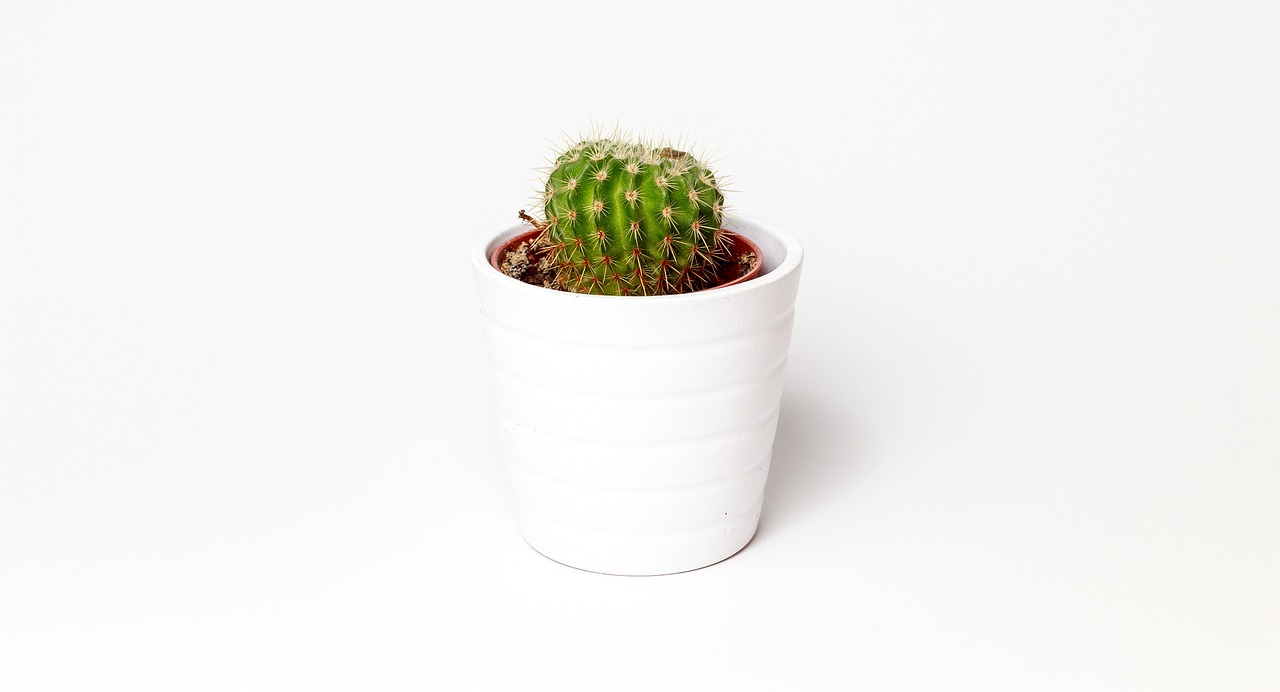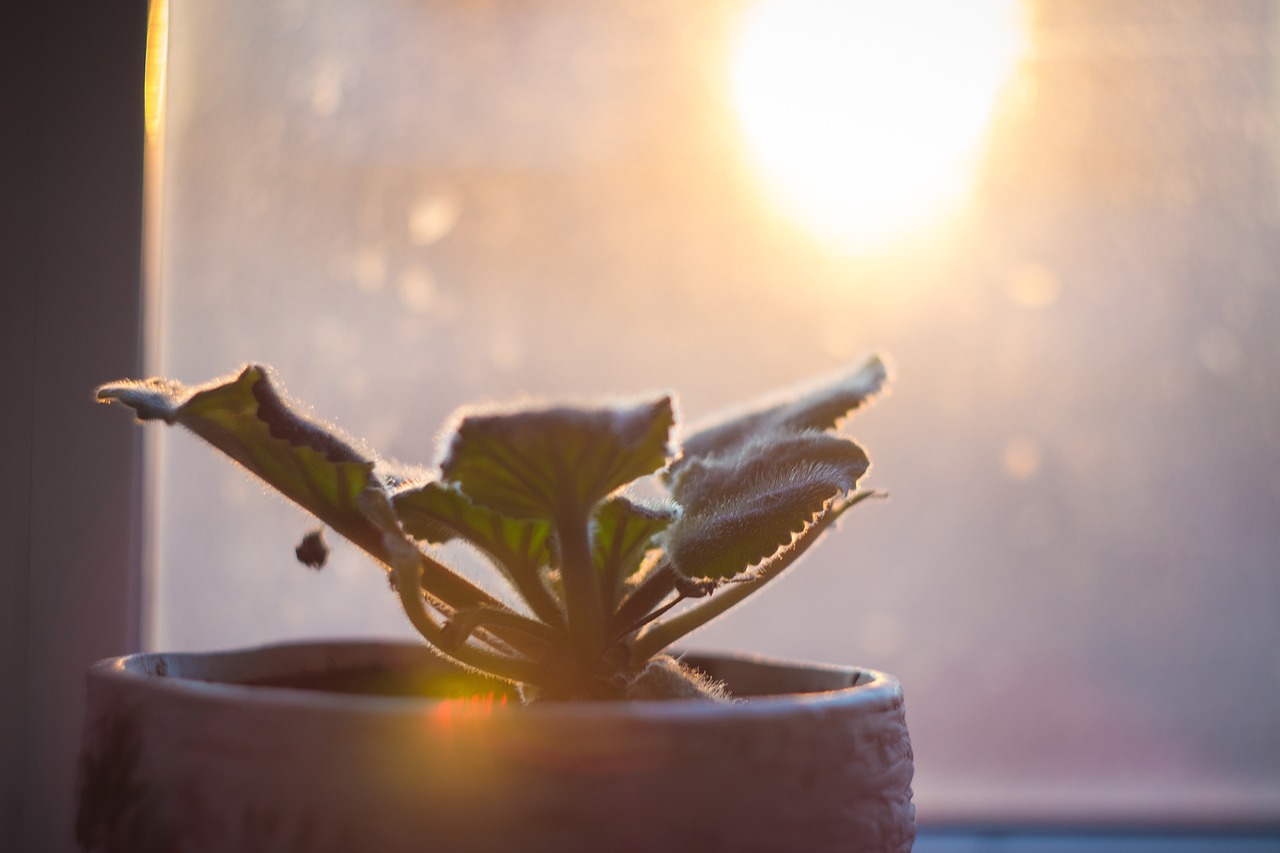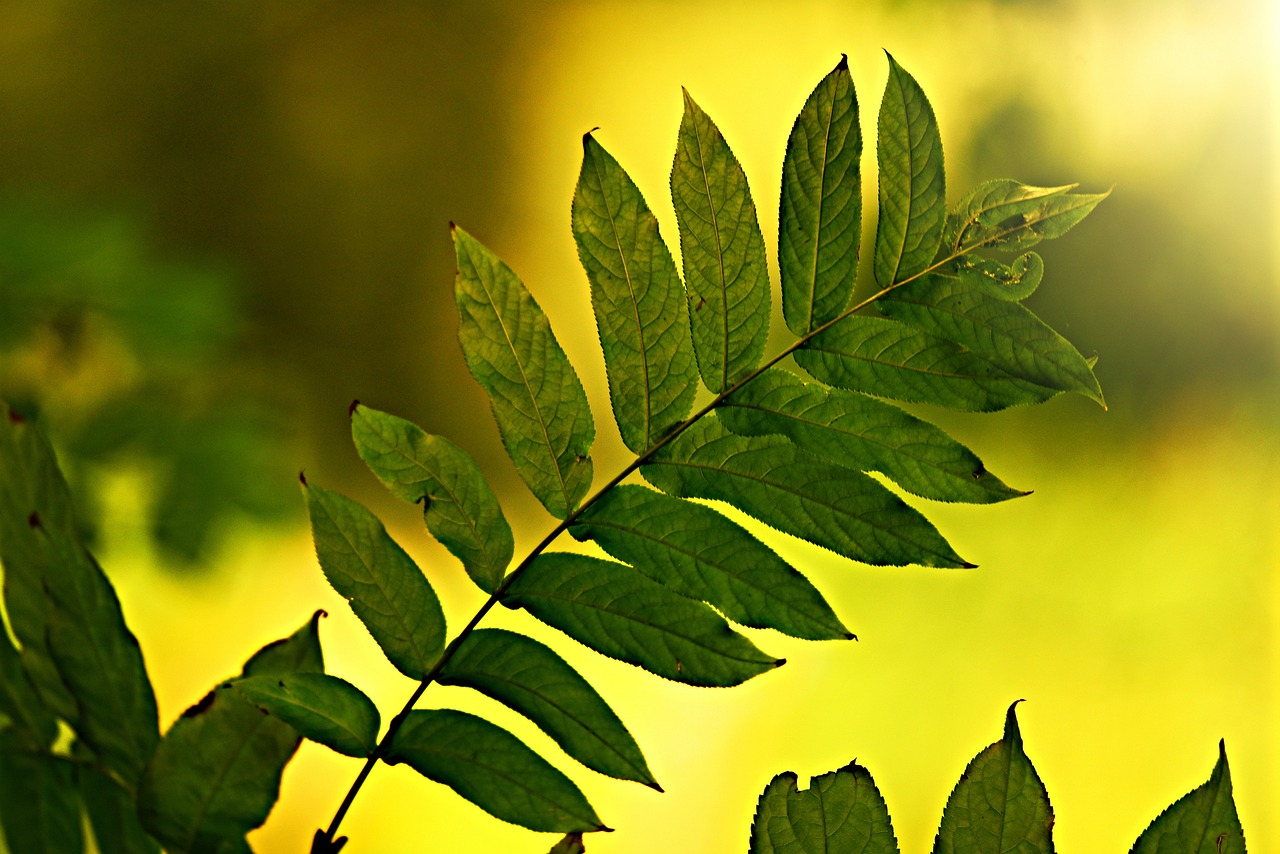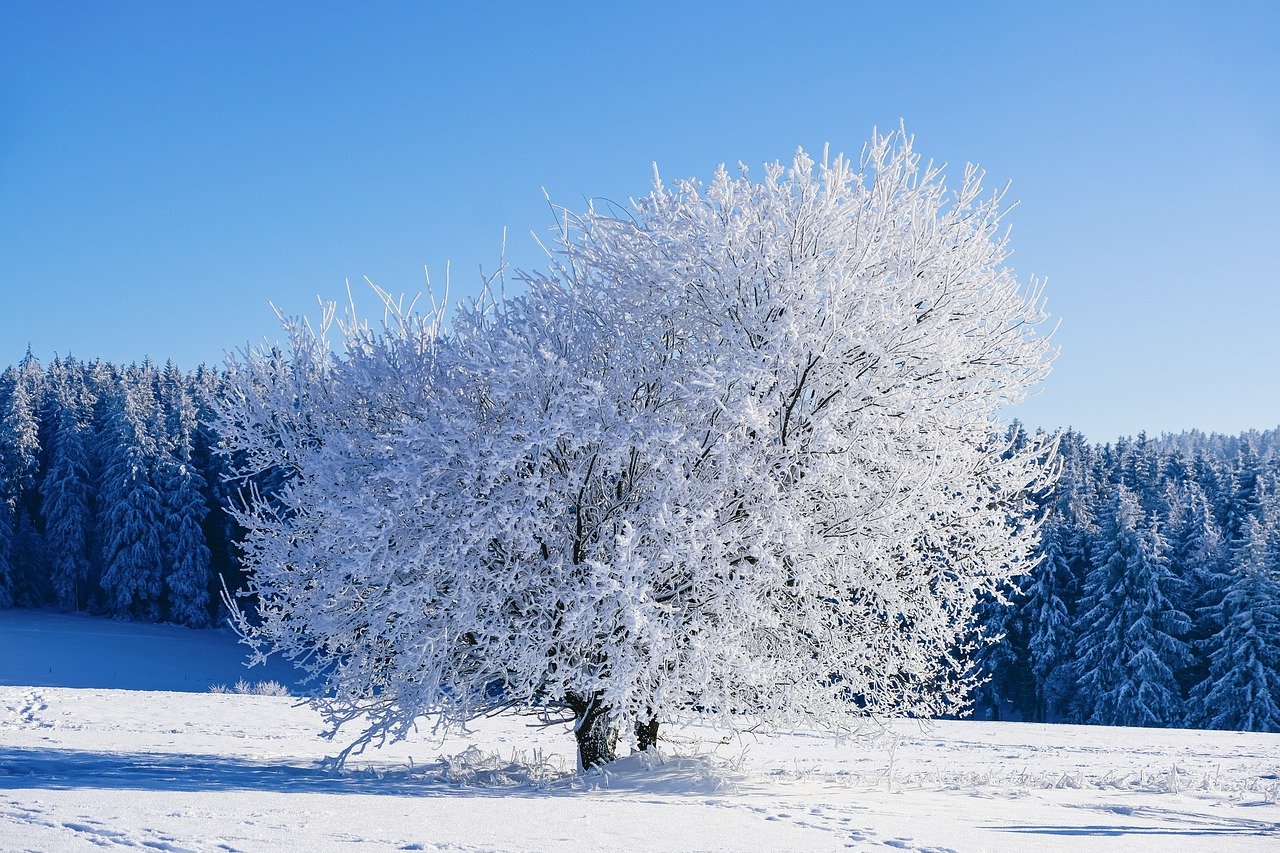Keep Your Indoor Plants Thriving During Winter
The cold winter months can be a challenging time for indoor plants, but with the right care and attention, you can keep them thriving and vibrant. Just like us, plants have specific needs that change with the seasons. During winter, they often require a little extra love to adapt to the shorter days and cooler temperatures. So, how can you ensure your leafy companions survive and flourish when the frost is nipping at the windows? Let's dive into some essential tips and tricks that will help you maintain a healthy indoor garden even when the weather outside is frightful!
Winter brings unique challenges for indoor plants. Understanding their specific needs during this season, including light, temperature, and humidity, is crucial for maintaining their health and vitality. Imagine your plants are like us—they need a cozy environment to thrive. With the right conditions, they can weather the winter just fine. Keep in mind that many plants go dormant in winter, which means they’re not growing as actively as they do in spring and summer. This dormancy can lead to a decrease in their need for water and nutrients, but it doesn't mean they don’t need your attention!
With shorter days and reduced sunlight, indoor plants may struggle. Just think about how you feel on a gloomy day; plants can feel the same way! Discovering how to optimize light exposure for your plants is essential to ensuring they receive adequate brightness throughout the winter months. You might need to reposition your plants to catch those precious sun rays or consider supplementing with artificial light. After all, a little extra brightness can go a long way in keeping your plants healthy and happy!
Grow lights can supplement natural light, helping plants thrive indoors. They are like a warm hug on a cold day for your plants! Learn about different types of grow lights and how to use them effectively for your indoor garden. Whether you’re a seasoned plant parent or just starting out, using grow lights can make a significant difference in your plants' growth and vitality during those dreary winter months.
Explore various types of grow lights, including LED, fluorescent, and incandescent options. Each type has its own benefits and drawbacks for indoor plant care. For instance:
| Type | Benefits | Drawbacks |
|---|---|---|
| LED | Energy-efficient, long-lasting, low heat | Higher initial cost |
| Fluorescent | Affordable, good for seedlings | Shorter lifespan, generates some heat |
| Incandescent | Inexpensive, easy to find | High energy consumption, generates a lot of heat |
Choosing the right grow light can feel overwhelming, but understanding the differences can help you make an informed decision for your indoor garden.
Proper placement and duration of grow lights are essential. Find out how to position lights and the ideal timing for optimal plant growth during winter. As a general rule of thumb, most plants need about 12 to 16 hours of light per day. You can use timers to make this process easier, ensuring your plants receive consistent light without you having to remember to turn them on and off.
Maintaining the right temperature and humidity levels is vital for indoor plants in winter. Just like us, plants prefer a comfortable environment. You might find that your home heating system dries out the air, which can be detrimental to your plants. Discover effective strategies to create a comfortable environment for your green companions, such as using humidifiers or placing trays of water near your plants to increase humidity.
Watering habits often change in winter due to lower evaporation rates. Learn how to adjust your watering schedule and techniques to prevent overwatering and root rot. It’s important to remember that plants need less water during their dormant period, so resist the urge to water them as frequently as you would in the warmer months. A good rule of thumb is to check the top inch of soil—if it feels dry, it’s time to water!
Recognizing signs of overwatering is crucial for plant health. Understand the symptoms to look for, such as yellowing leaves or a mushy stem, and how to respond to prevent damage to your indoor plants. If you notice these signs, it might be time to cut back on watering and allow the soil to dry out a bit.
Monitoring soil moisture is essential during winter. Explore tools and methods for checking moisture levels to ensure your plants receive the right amount of water. You can use moisture meters, or simply stick your finger into the soil to gauge its dampness. This simple act can save your plants from drowning and keep them thriving through the winter!
- How often should I water my indoor plants in winter? Watering frequency varies by plant, but generally, check the soil moisture and water only when the top inch is dry.
- Can I use regular light bulbs for my plants? While you can use them, grow lights are more effective as they provide the specific light spectrum that plants need.
- What should I do if my plant is getting too leggy? Increase light exposure and consider rotating your plants to ensure even growth.

Understanding Winter Plant Needs
This article provides essential tips to ensure your indoor plants remain healthy and vibrant during the cold winter months, addressing common challenges and solutions for plant care.
Winter brings a unique set of challenges for indoor plants, and understanding their specific needs during this season is crucial for maintaining their health and vitality. The cold months can be tough on your green companions, and just like us, they require some extra care to thrive. The three main factors to consider are light, temperature, and humidity. Each of these elements plays a vital role in ensuring your plants not only survive but flourish despite the chill outside.
First off, let’s talk about light. With shorter days and reduced sunlight, many indoor plants may struggle to get the brightness they need. It's like trying to read a book in a dimly lit room—eventually, your eyes will tire, and you might just give up. To combat this, you may need to reposition your plants closer to windows or even consider using supplemental lighting, which we'll discuss in detail later.
Next up is temperature. Indoor plants generally prefer a stable environment, and winter can throw a wrench into that. Cold drafts from windows or doors can shock your plants, leading to stress and poor growth. Ideally, you want to keep your indoor environment between 65°F and 75°F (18°C to 24°C) during the day and slightly cooler at night. Think of it as creating a cozy blanket for your plants—a warm hug that keeps them comfortable and happy.
Lastly, we can't forget about humidity. Winter air tends to be drier, especially with heating systems running. This can lead to crispy leaf edges and overall unhealthy plants. To maintain a healthy level of humidity, consider using a humidifier, grouping plants together, or even placing a tray of water with pebbles near your plants. It’s like giving your plants a refreshing spa day!
In summary, understanding and addressing these winter needs is essential. By paying attention to light, temperature, and humidity, you can create an environment where your indoor plants can thrive despite the winter chill. Remember, each plant species may have its own specific requirements, so it’s always a good idea to do a little research on the needs of your individual plants.
- How often should I water my indoor plants in winter? It's best to water less frequently in winter as plants generally require less water due to slower growth rates. Always check the top inch of the soil before watering.
- Can I use regular light bulbs for my plants? While regular bulbs can provide some light, grow lights are specifically designed to meet the needs of plants and are more effective.
- What are the signs that my plant is not getting enough light? Yellowing leaves, leggy growth, and leaves dropping can indicate insufficient light.

Light Requirements in Winter
As the winter months roll in, the days grow shorter and the sunlight becomes a rare commodity. For indoor plants, this change can feel like a long, dark night. But don’t worry! With a little understanding of your plants' light requirements, you can keep them thriving even in the gloomiest of seasons. Just like us, plants need light to grow, and during winter, they may not get enough of it naturally. So, how do we ensure our green friends get the brightness they crave?
First, let’s talk about natural light. During winter, the sun's angle changes, and windows that once bathed your plants in a warm glow might now cast shadows. You might notice your plants stretching toward the light, which is their way of saying, “Hey, I need more sun!” To combat this, consider moving your plants closer to windows that receive the most sunlight. South-facing windows are usually the best bet, as they capture the most light throughout the day.
If you find that natural light is still insufficient, it's time to explore the world of grow lights. These artificial lights can mimic sunlight and provide the necessary energy for photosynthesis. There are various types of grow lights available, and each has its unique benefits. For instance, LED grow lights are energy-efficient and emit low heat, making them perfect for indoor use. On the other hand, fluorescent lights are great for starting seedlings but may not be as effective for larger plants. Understanding these options can help you choose the right one for your indoor garden.
When using grow lights, placement is key. Ideally, you want to position the lights about 12-24 inches above your plants. This distance allows for adequate light exposure without overwhelming your plants with too much heat. Additionally, the duration of light exposure is crucial. Most indoor plants thrive with about 12-16 hours of light per day during winter. You can use timers to automate this process, ensuring your plants receive consistent light without the risk of forgetting to turn the lights on or off.
Here’s a quick rundown of the most common types of grow lights:
| Type | Benefits | Drawbacks |
|---|---|---|
| LED | Energy-efficient, low heat, long lifespan | Higher initial cost |
| Fluorescent | Great for seedlings, affordable | Less effective for larger plants |
| Incandescent | Inexpensive, easy to find | High heat output, less energy-efficient |
Once you've chosen your grow lights, think about how to position them effectively. A common mistake is placing lights too far away from the plants, which can lead to inadequate light absorption. Remember, the goal is to replicate natural sunlight as closely as possible. Additionally, monitor your plants closely. If they start to look leggy or pale, it might be time to adjust the light's position or duration. Just like us, plants can be a bit finicky, and finding that sweet spot can make all the difference!
In conclusion, maintaining proper light exposure for your indoor plants during winter is essential for their health and growth. By understanding their needs and utilizing grow lights effectively, you can ensure your plants remain vibrant and lush, even when the outside world is covered in frost. So, don’t let the winter blues get you down—bring the sunshine indoors!

Using Grow Lights
As winter settles in, our beloved indoor plants often find themselves in a bit of a pickle. With shorter days and less natural sunlight filtering through our windows, it’s no wonder they can start looking a bit droopy and sad. Enter grow lights—the superhero sidekicks that can save the day! These artificial light sources are designed to mimic sunlight, providing your plants with the energy they need to keep growing strong and healthy, even in the coldest months.
So, how do you choose the right grow lights for your indoor garden? Well, it all starts with understanding the different types available on the market. Here’s a quick rundown:
| Type of Grow Light | Benefits | Drawbacks |
|---|---|---|
| LED | Energy-efficient, long-lasting, low heat emission | Higher initial cost |
| Fluorescent | Affordable, good for seedlings and low-light plants | Less effective for larger plants, shorter lifespan |
| Incandescent | Inexpensive and widely available | High heat output, not energy-efficient |
When selecting your grow lights, consider what type of plants you have and their specific needs. For example, if you’re nurturing tropical plants that crave bright light, LED lights may be your best bet. They provide the intensity needed without overheating your plants. On the other hand, if you’re just starting with seedlings, fluorescent lights can be a cost-effective solution.
Now that you’ve got your grow lights, the next step is placement. Ideally, you want to position the lights about 12-24 inches above your plants, depending on the type of light you’re using. Remember, the goal is to provide adequate light without scorching those delicate leaves. A little trial and error might be necessary, but your plants will thank you for it!
As for timing, most plants benefit from about 12-16 hours of light each day during the winter months. You can use a timer to make this process hassle-free. Just set it and forget it! This way, your plants will get the consistent exposure they need to thrive, even when the sun is playing hide-and-seek outside.
In summary, using grow lights is an effective way to keep your indoor plants happy and healthy during winter. By choosing the right type, placing them correctly, and maintaining a consistent lighting schedule, you can ensure that your green friends continue to grow and flourish, no matter how chilly it gets outside.
- How do I know if my plants need grow lights? If your plants are stretching towards the light, turning yellow, or showing signs of stunted growth, they may need additional lighting.
- Can I use regular light bulbs as grow lights? While some regular bulbs can provide light, they often lack the specific wavelengths that plants need for optimal growth.
- How long should I leave grow lights on? Most plants benefit from 12-16 hours of light a day, but this can vary based on the type of plant.

Types of Grow Lights
When it comes to keeping your indoor plants happy and healthy during those dreary winter months, grow lights can be a game-changer. With limited natural sunlight, these artificial lights provide the necessary brightness that your plants crave. But not all grow lights are created equal! Understanding the different types available can help you choose the best option for your indoor garden.
First up, we have LED grow lights. These are the rockstars of the grow light world! Not only are they energy-efficient, but they also emit a full spectrum of light that mimics natural sunlight. This means your plants will receive the exact wavelengths they need for photosynthesis, promoting healthy growth. Plus, they run cool, which is a bonus for maintaining the right temperature in your home.
Next, we have fluorescent lights. These are often more affordable and are great for starting seedlings or growing smaller plants. They come in various types, such as T5 and T8 bulbs, and provide a good amount of light without consuming too much energy. However, they might not be as effective for larger plants or those that require intense light.
Last but not least, let’s talk about incandescent lights. While these were once the go-to option for indoor growers, they are now considered less efficient. They produce a lot of heat and not enough light for most plants, making them more suitable for short-term use or as supplemental lighting. If you do choose incandescent lights, be mindful of their heat output to avoid overheating your plants.
Here's a quick comparison of the three types of grow lights:
| Type of Grow Light | Energy Efficiency | Light Spectrum | Heat Output | Best For |
|---|---|---|---|---|
| LED | High | Full Spectrum | Low | All types of plants |
| Fluorescent | Moderate | Good Spectrum | Low | Seedlings and small plants |
| Incandescent | Low | Narrow Spectrum | High | Short-term use |
In summary, choosing the right type of grow light can significantly impact your indoor gardening success during winter. LED lights are generally the best option due to their efficiency and effectiveness, while fluorescent lights serve well for specific needs. Incandescent lights, on the other hand, are best reserved for special situations. By understanding these options, you can ensure your plants receive the light they need to thrive, even when the sun is hiding behind those winter clouds!
- How many hours of light do indoor plants need during winter? Most indoor plants benefit from 12-16 hours of light a day during winter months.
- Can I use regular light bulbs instead of grow lights? While regular bulbs can provide some light, they typically lack the full spectrum needed for optimal plant growth and may produce too much heat.
- Do I need to change the height of my grow lights? Yes, as plants grow, you may need to adjust the height of your grow lights to prevent burning and ensure adequate light exposure.

Placement and Duration
When it comes to ensuring your indoor plants thrive during the winter months, placement and duration of grow lights play a critical role. Think of your plants as sunbathers on a beach; they need just the right amount of sunlight to feel rejuvenated and grow. During winter, with the sun hiding behind clouds and days getting shorter, your plants might feel like they’re stuck indoors on a gloomy day. So, how do we help them soak up that vital light? It all starts with where and how long you keep those grow lights on.
First, let’s talk about placement. Position your grow lights as close to the plants as possible without causing any heat stress. A good rule of thumb is to keep the lights about 12 to 24 inches above the plant canopy. This distance can vary based on the type of grow light you are using. For instance, LED lights can be placed closer than fluorescent lights due to their lower heat output. The goal is to mimic the natural sunlight that plants crave. If your plants start to stretch towards the light, it’s a sign they’re not getting enough. Adjust the height of your lights accordingly.
Now, let’s dive into duration. During the winter months, your plants may require around 12 to 16 hours of light each day to thrive. This might seem excessive, but remember, they’re used to longer days during the summer. You can use a timer to automate the process, ensuring your plants get a consistent lighting schedule. This not only saves you the hassle of turning the lights on and off but also helps your plants establish a routine. Think of it as setting an alarm clock for your green friends!
To help visualize this, here’s a simple table outlining the recommended placement and duration for different types of grow lights:
| Type of Grow Light | Recommended Height (inches) | Recommended Duration (hours) |
|---|---|---|
| LED | 12-18 | 12-16 |
| Fluorescent | 18-24 | 14-16 |
| Incandescent | 24 | 10-12 |
In summary, the placement and duration of your grow lights are essential to keeping your indoor plants happy and healthy during winter. By ensuring they receive adequate light at the right height and for the right amount of time, you can help them thrive even in the darkest months. Just remember, your plants are counting on you to be their sun!
- How do I know if my plants are getting enough light? If your plants are stretching towards the light or have pale leaves, they may need more light.
- Can I leave grow lights on 24/7? It's not recommended as plants also need a dark period for respiration.
- What type of grow light is best for beginners? LED lights are often the best choice for beginners due to their energy efficiency and low heat output.

Temperature and Humidity Control
Maintaining the right temperature and humidity levels is vital for the health of your indoor plants during the winter months. As the chill sets in, our homes can become dry and cold, which isn't ideal for our green friends. Think of it this way: just as we bundle up in cozy sweaters to keep warm, our plants need a similar protective environment to thrive. The ideal temperature for most indoor plants ranges between 65°F to 75°F (18°C to 24°C) during the day and a bit cooler at night. This fluctuation mimics their natural habitat, where temperatures aren't static.
Humidity is another crucial factor often overlooked in winter. Indoor heating systems can strip the air of moisture, leading to a dry atmosphere that can stress your plants. Most houseplants prefer humidity levels of around 40% to 60%. To create a more hospitable environment, consider these effective strategies:
- Use a Humidifier: This is one of the easiest ways to boost humidity levels. Place it near your plants to create a microclimate.
- Group Plants Together: By clustering your plants, they can create a mini ecosystem where moisture is shared.
- Water Trays: Fill shallow trays with water and pebbles. As the water evaporates, it increases humidity around your plants.
- Regular Misting: Lightly misting your plants can temporarily increase humidity, but be cautious not to overdo it, as this can lead to mold.
Another aspect to consider is the placement of your plants. Avoid placing them near drafty windows, heaters, or air conditioning vents. These areas can cause sudden temperature fluctuations that can stress your plants. Instead, find a spot where they can enjoy stable temperatures and indirect sunlight. If you notice your plant's leaves curling or browning, it might be a sign that the temperature or humidity is off. Regularly check your plants and adjust their environment as needed.
In conclusion, keeping a watchful eye on temperature and humidity during winter is essential for maintaining the health of your indoor plants. By creating a stable and moist environment, you can help your plants not just survive but thrive through the colder months. Remember, a little effort goes a long way in ensuring your indoor garden remains vibrant and lush!
Q: What is the ideal temperature range for indoor plants during winter?
A: The ideal temperature for most indoor plants during winter is between 65°F to 75°F (18°C to 24°C) during the day and slightly cooler at night.
Q: How can I increase humidity for my indoor plants?
A: You can increase humidity by using a humidifier, grouping plants together, placing water trays with pebbles, or lightly misting the plants.
Q: Should I move my plants away from windows in winter?
A: Yes, it's best to avoid placing plants near drafty windows or heating vents, as these can cause temperature fluctuations that may stress the plants.
Q: What signs indicate that my plant is not getting enough humidity?
A: Signs of low humidity include leaf curling, browning tips, and dry leaf edges. If you notice these symptoms, consider increasing the humidity around your plants.

Watering Techniques in Winter
As winter settles in, the way we care for our indoor plants must adapt to the changing environment. One of the most significant adjustments is how we approach watering. With lower temperatures and reduced light levels, the evaporation rate of moisture from the soil decreases, meaning your plants may not need as much water as they did during the warmer months. This can be a bit tricky, as overwatering is one of the most common pitfalls for plant owners during winter.
To keep your green friends happy and healthy, it's essential to adjust your watering schedule. Instead of sticking to a strict weekly routine, take a moment to assess the moisture level of the soil before you water. A handy tip is to stick your finger about an inch into the soil; if it feels dry at that depth, it’s time to give your plant a drink. If it’s still moist, hold off for a few more days. This simple test can save your plants from drowning!
Another effective technique is to water deeply but less frequently. When you do water, make sure to soak the soil thoroughly until you see water draining from the bottom of the pot. This encourages the roots to grow deeper in search of moisture, making your plants more resilient in the long run. However, be cautious not to let your plants sit in standing water, as this can lead to root rot. To prevent this, ensure your pots have proper drainage holes and consider using a saucer to catch excess water.
It's also crucial to monitor the humidity levels in your home during winter. Indoor heating systems can dry out the air, which may lead to additional stress for your plants. If you notice your plants are looking a bit droopy or their leaves are turning brown at the edges, it could be a sign that the air is too dry. To combat this, consider using a humidifier or placing a shallow tray filled with water and pebbles near your plants. As the water evaporates, it will increase the humidity around them, creating a more comfortable environment.
In conclusion, watering your indoor plants during winter requires a little more attention and care than in other seasons. By adjusting your watering habits, monitoring soil moisture, and keeping an eye on humidity levels, you can ensure your plants continue to thrive even in the coldest months. Remember, less is often more when it comes to watering in winter!
- How often should I water my indoor plants in winter?
It varies by plant, but generally, you should water less frequently. Always check the soil moisture before watering. - What signs indicate that my plant is overwatered?
Look for yellowing leaves, wilting, or a mushy stem. These are common signs of overwatering. - Can I use tap water for my indoor plants?
Yes, but let it sit for 24 hours to allow chlorine to evaporate. Alternatively, filtered or distilled water is a great option. - How can I increase humidity for my indoor plants?
You can use a humidifier, group plants together, or place trays of water near them to boost humidity levels.

Signs of Overwatering
Overwatering is one of the most common mistakes indoor gardeners make, especially during the winter months when plants are less active. It's crucial to recognize the early on to prevent your beloved green friends from suffering. So, how can you tell if your plants are getting too much water? Let's dive into the symptoms!
One of the first signs to look for is yellowing leaves. If you notice that the leaves of your plant are turning a sickly yellow, it may be a signal that the roots are drowning in excess moisture. This condition often leads to root rot, which can be fatal for your plants. Additionally, if the lower leaves are dropping off while the upper leaves remain green, this could indicate that your plant is stressed due to overwatering.
Another telltale sign is the presence of mold or fungus on the soil surface. If you see a white or fuzzy layer forming on the top of the soil, it's a clear indication that the environment is too damp. This not only harms your plant but can also attract pests that thrive in wet conditions.
Furthermore, if you notice that your plant is wilting despite being watered, this paradox can be confusing. However, overwatered plants often exhibit wilting because their roots are unable to absorb water properly due to rot. This can lead to a state where the plant is both overwatered and dehydrated at the same time. Isn’t that a perplexing situation?
To help you better understand these signs, here’s a quick reference table:
| Sign | Description |
|---|---|
| Yellowing Leaves | Leaves turning yellow, especially lower ones, indicating possible root issues. |
| Mold on Soil | White or fuzzy mold on the soil surface, suggesting excessive moisture. |
| Wilting | Plants appear wilted despite regular watering, often due to root rot. |
Finally, always check the soil moisture before watering. You can use your finger to poke about an inch into the soil. If it feels wet, it's best to hold off on watering for a few days. Alternatively, consider investing in a moisture meter for a more accurate reading. Remember, it's better to underwater than to overwater, especially during the winter when plants are in a dormant phase.
- How often should I water my indoor plants in winter? It depends on the type of plant, but generally, once every 1-2 weeks is sufficient. Always check the soil moisture first!
- Can I save a plant that has been overwatered? Yes, but it requires immediate action. Remove the plant from its pot, trim any rotten roots, and let it dry out before repotting.
- What type of soil is best for preventing overwatering? A well-draining soil mix, such as one with perlite or sand, can help prevent water from accumulating around the roots.

Soil Moisture Monitoring
Monitoring soil moisture is one of the most critical aspects of keeping your indoor plants happy during the winter months. As the air becomes drier and evaporation rates decrease, it’s easy to overwater or underwater your green friends. Think of soil moisture monitoring as a lifeline for your plants; it helps you gauge their thirst without second-guessing yourself. So, how do you effectively keep track of moisture levels? Let’s dive into some practical strategies!
First off, you can use a variety of tools to assist you in measuring soil moisture. Moisture meters are fantastic devices that can give you a quick reading of how wet or dry your soil is. Simply insert the probe into the soil, and the meter will indicate the moisture level. This is particularly helpful for those of us who might struggle to judge soil moisture just by touch. However, if you prefer a more hands-on approach, you can also use your finger to gauge moisture levels. Stick your finger about an inch deep into the soil; if it feels dry, it’s time to water!
Another effective method is to adopt the “weight test”. When your plant is adequately watered, the pot should feel heavy. As the soil dries out, the pot becomes lighter. This method is especially useful for larger pots or plants that are harder to access. Just lift the pot occasionally to check its weight. Over time, you’ll develop a sense of what a well-watered pot feels like compared to a dry one.
In addition to these methods, consider the type of soil you’re using. Some soils retain moisture better than others. For instance, a soil mix that contains peat moss will hold onto water longer than a standard potting mix. If you're using a soil that drains quickly, you may need to monitor moisture levels more frequently.
To further assist your plants during the winter, you might also want to establish a watering schedule. While it’s essential to respond to your plants' needs based on moisture levels, having a general routine can help you stay on track. For instance, you might decide to check moisture levels every week and water accordingly. This way, you can avoid the dreaded overwatering that leads to root rot, which can be a silent killer for indoor plants.
In summary, soil moisture monitoring is an essential practice for maintaining the health of your indoor plants during winter. By utilizing moisture meters, the weight test, and understanding your soil type, you can ensure your plants receive just the right amount of water. Remember, it’s all about balance—too much or too little can lead to unhappy plants. So, keep an eye on the moisture levels, and your indoor garden will flourish even in the coldest months!
- How often should I check my indoor plants' soil moisture? It's best to check the moisture levels at least once a week, but this can vary depending on the plant type and environmental conditions.
- What are the signs that my plant is underwatered? Common signs include wilting leaves, dry soil, and slow growth. If you notice these symptoms, it's time to give your plant a drink!
- Can I use tap water for my indoor plants? Yes, but it's advisable to let tap water sit for 24 hours before using it. This allows chlorine to dissipate, making it safer for your plants.
- What should I do if I accidentally overwater my plant? If you suspect overwatering, remove the plant from its pot and inspect the roots. Trim any that are mushy or rotten, and let the plant dry out before repotting it in fresh soil.
Frequently Asked Questions
- How can I provide enough light for my indoor plants during winter?
In winter, the days are shorter, and natural sunlight is limited. To ensure your plants get enough light, consider using grow lights. These can supplement the natural light and help your plants thrive. Position them about 12-24 inches above your plants and keep them on for about 12-16 hours a day for optimal results.
- What type of grow lights are best for indoor plants?
There are several types of grow lights available, including LED, fluorescent, and incandescent. LED lights are energy-efficient and emit less heat, making them a popular choice. Fluorescent lights are also effective and are often used for seedlings. Incandescent lights are less efficient and can produce too much heat, so they are generally not recommended for most indoor plants.
- How often should I water my indoor plants during the winter?
Watering needs change in winter due to lower evaporation rates. It's important to check the soil moisture before watering. Generally, you should water your plants less frequently, allowing the top inch of soil to dry out between watering. Overwatering can lead to root rot, so always err on the side of caution.
- What are the signs of overwatering in indoor plants?
Signs of overwatering include yellowing leaves, wilting, and a soggy or mushy stem. If you notice these symptoms, check the soil moisture level. If it feels wet, allow it to dry out before watering again. Adjust your watering schedule accordingly to prevent further damage.
- How can I monitor soil moisture levels effectively?
You can use a moisture meter to check the moisture level in the soil or simply stick your finger about an inch into the soil. If it feels dry at that depth, it’s time to water. Additionally, observing your plants’ overall health can also give you clues about their moisture needs.
- What temperature and humidity levels are ideal for indoor plants in winter?
Most indoor plants prefer temperatures between 65°F and 75°F (18°C to 24°C) during the day and a bit cooler at night. Humidity levels should ideally be around 40-60%. You can increase humidity by placing a humidifier nearby or grouping plants together to create a microclimate.



















